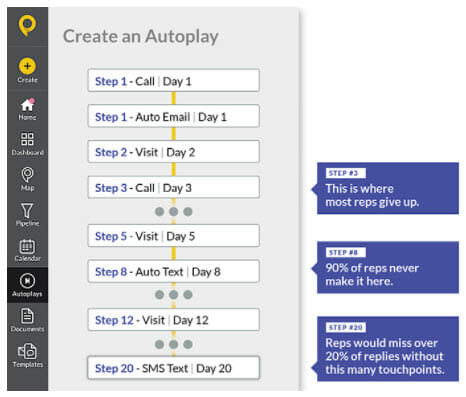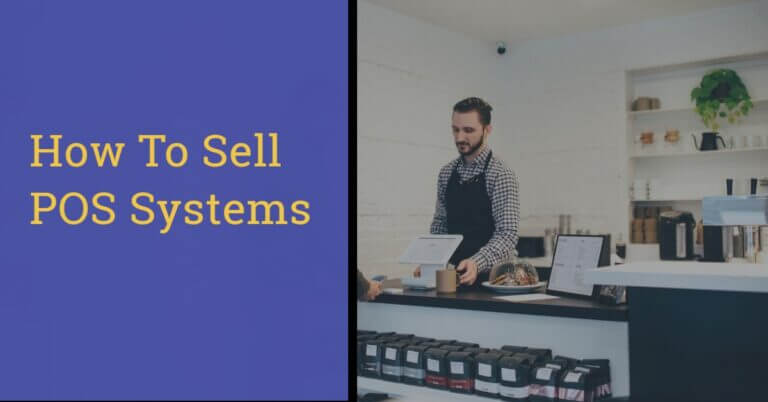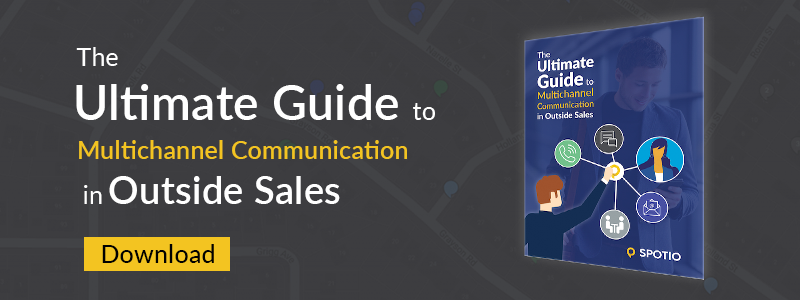Do you sell POS systems? Then you have a lot to look forward to.
Recent research shows that the hardware as a service market (HaaS) should reach $300+ billion in 2026. Other studies predict the POS space, specifically, to grow by 6.9% over the next five years or so—especially those sold via subscription.
In other words, there’s tons of potential. We want to help you grab as much of it as possible. So, in this article, we’ll share ten tips you can use to start selling more POS systems than ever before. Sound good? Then let’s get started!
How to Sell POS Systems
Selling POS systems is an art and a science. The tips, tricks, and best practices below will help your team excel at both, leading to more revenue for your company.
Define your ideal customer profile
First, get to know your target audience like the back of your hand.
Who are they? What goals do they want to achieve? What challenges stand in their way? How can your POS system help them overcome these things?
Once you’ve done extended research, assemble the information you collect into an ideal customer profile* (ICP), which should include details about the industry, company size, physical location, current budget, and probable pain points.
*An ideal customer profile (ICP) is a fictional company that will benefit from the products and/or services you sell. ICPs are especially handy when prospecting.
Understand different POS system requirements
Where do your ideal customers use their POS systems? Different environments call for different setups, so you need to understand the various requirements.
For example, does your target audience use handheld devices? Or would they prefer a full-fledged cash register-like system? Maybe your market wants to take a hybrid approach that can be adjusted depending on specific scenarios.
If you haven’t already, take time to understand the different POS requirements of your ideal customers. That way, you’re prepared to offer these things to them.
Set activity and performance goals
It doesn’t matter how much market research you do. If your reps don’t actually use said research to contact and convert leads, your company won’t make sales.
With that in mind, set activity and performance goals for your reps. Doing so will keep them accountable. It will also help you determine which activities are most important. You can then adjust your department’s sales strategy to suit.
What do we mean by activity and performance goals? Simple: tell your reps to contact X amount of leads a day. Or maintain an X% conversion rate.
Prospect with ICP data
Remember what we said earlier? Your ICPs will help you prospect more efficiently.
Rather than contacting every company under the sun, your reps will focus on the companies that might actually buy, i.e., the companies that match your ICP.
We suggest creating a prospect rating system. Here’s an example: use a three-tier approach that splits prospects into one of three categories— “Bad,” “Good,” and “Best.” Then ask your reps to sort the prospects they generate based on how closely they resemble your ICP. Once this happens, reps should focus on “Best” leads first.
Sell benefits, not features
Salespeople should always sell benefits before features.
These are the things customers actually care about, after all. But it’s even more important when selling POS systems because, let’s be honest, there aren’t any super exciting, take-your-breath-away features to promote.
So, which benefits should your reps stress in sales conversations? The ease of use and versatility of your POS system should get a potential customer’s attention.
They want to purchase a product that will easily adapt to their needs. And if they can use it in multiple ways, all the better. Try stressing these kinds of things.
Look for gaps in legacy systems
Imagine this: your reps are talking to a prospect, and they know that their POS system would be a perfect fit. But the prospect won’t commit to a purchase. They bought an expensive, legacy product a few years ago and won’t give it up—even though they don’t like it. How can your reps get them to pull the trigger and buy?
Here’s our suggestion: look for gaps in their current system. Then explain to potential customers how your POS can fill said gaps. Problem solved.
Bundle service offerings
This is one of the best tips we can give you to help sell POS systems faster. Why? Because bundling services together makes life easier for customers.
They won’t have to research and purchase multiple solutions from multiple vendors. They won’t have to write multiple checks every month. And if their system ever stops working, they won’t have to contact multiple companies to troubleshoot the issue. Instead, they’ll just call your company, and you’ll make the problems disappear.
So, if at all possible, try to sell POS hardware and software, WiFi, loyalty, kiosks, payment processing, and whatever else you can think of as a single package.
Use a multi-channel sales approach
You manage a field sales team, right?
If so, your reps spend a ton of time outside the office, traveling from one prospect to the next, attempting to sell POS systems to as many businesses as possible.
Here’s the thing: if in-person visits are the only way your reps connect with potential customers, you’re selling your company short.
Every customer has preferences. Some enjoy in-person visits. Others want to talk to sales reps on the phone. Still, others will only pay attention to personalized emails.
Ask your reps to adopt a multichannel sales approach to make more sales. That way, they can reach every prospect however they prefer, boosting the likelihood of a sale. Trust us; your team’s close rate will skyrocket when this happens.
Automate your process
What does every sales team want? More sales in less time.
There are a few ways to achieve this. First, reps can score their leads and only talk to those with a legitimate interest in buying. They can perfect their sales pitch, too, optimizing it so that more people are encouraged to buy from them.
We recommend both of these things. But if you want to speed up your sales process, you must automate it. Doing so will reduce manual tasks like data entry and free reps up to contact more prospects than they could before.

SPOTIO’s Autoplays features helps prevent quality leads from falling through the cracks.
Assist and serve
Finally, when selling POS systems, look for ways to serve your prospects. Always. How can your team make the buying process easier for them? Here are a few ideas:
- Let prospects know that your reps are always available to help.
- Offer additional services, such as installing the systems your reps sell.
- Create and publish training manuals that new customers can download.
- Send the occasional business-building tip to all of your customers via email.
While these things may seem trivial, they can have a significant impact on potential customers. So significant, in fact, it might convince them to buy.
Sell More POS Systems With SPOTIO
As you know, selling POS systems isn’t easy. While the demand is high, the competition is fierce. To give yourself an edge, invest in SPOTIO.
Our platform was specifically designed to help field sales teams close more deals. As such, it’s equipped with lead generation, route planning, task automation, activity tracking, multichannel communication, and sales reporting features.
Sign up for a free demo of SPOTIO today to learn if it’s the right tool for your team!



